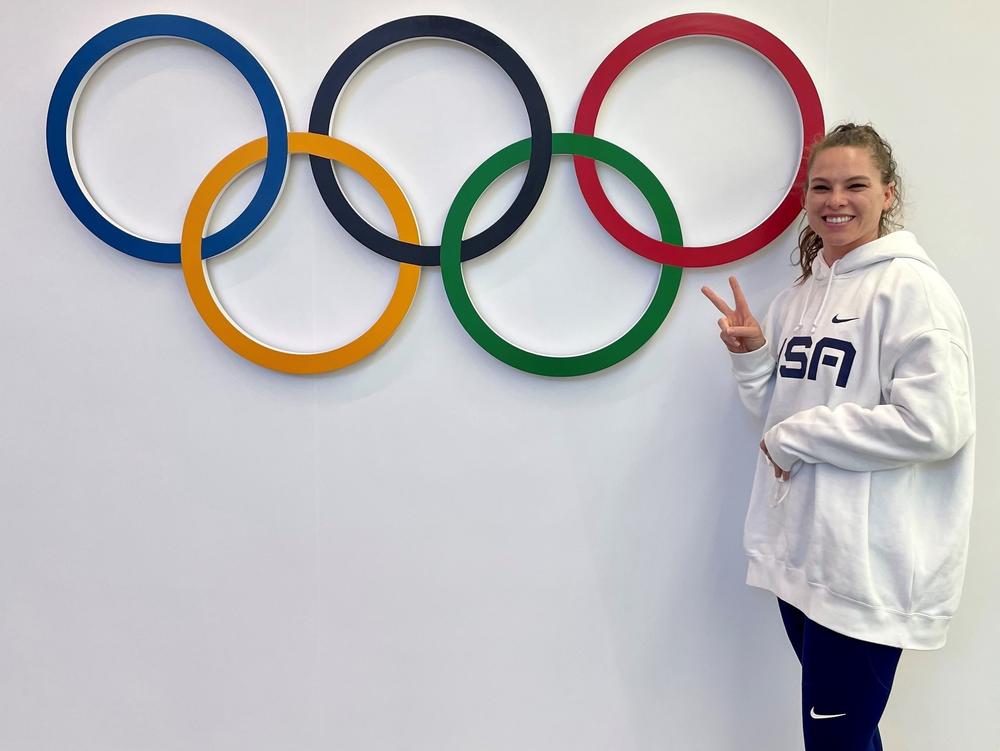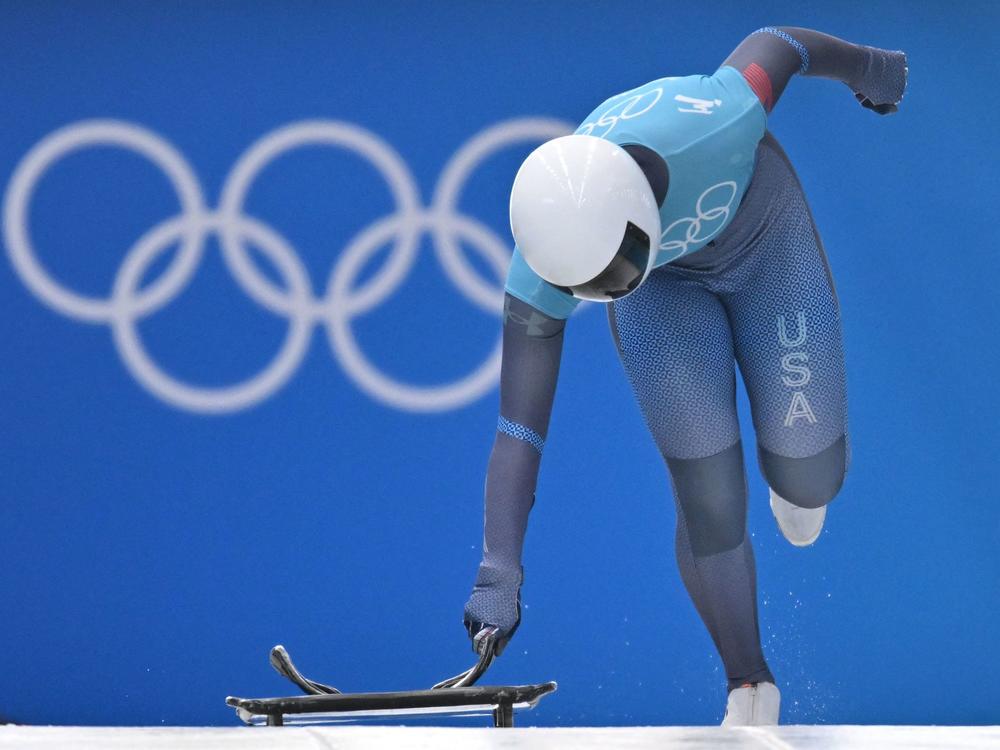Section Branding
Header Content
Meet the first Black skeleton athlete to compete for the U.S. at the Olympics
Primary Content
BEIJING — Skeleton is a heart-racing, adrenaline-fueled event where a single racer flies face first down a frozen track, sometimes going more than 80 mph, belly down on a sled.
Kelly Curtis is quick to acknowledge this sport is "crazy." That doesn't make her love it any less.
The event has been a mainstay at the Winter Games since 2002. At the Beijing Winter Olympics, just three Americans will compete for a medal — and Curtis is one of them.
As soon as Curtis shot herself down a topsy-turvy track in Beijing on Friday, she made history.
Curtis is the first Black athlete, man or woman, to represent the U.S. at the Olympics in skeleton. The 33-year-old is also the only member of the U.S. Air Force at this year's Winter Games.
Curtis joins a small group of Black athletes competing for the U.S. at the Beijing Olympics.
The inherent pressure of being "the first" and "only" isn't phasing her, she said.
"I am treating this like every race," she said.
After the start of her tw0-day event Friday morning, Curtis stands 18th. Her teammate Katie Uhlaender is eighth. They are scheduled to next compete for the final round of skeleton runs at 9:55 p.m. Beijing time (8:55 a.m. EST) on Saturday, Feb. 12.
From bobsled to skeleton
Before turning an obsession-like focus onto skeleton, Curtis used to compete in the related sport of bobsled.
In 2013, during a break at graduate school and while training with her bobsled team, she looked over at skeleton racers practicing at the same training facility and was immediately intrigued.
"It looked like they were having way more fun. I was really intrigued by it," she said.
So she asked to take a stab at driving a sled. "I loved it instantly."
The transition from bobsledding to skeleton wasn't too difficult, Curtis said.
A lot of the skills Curtis developed in bobsledding transferred smoothly over to skeleton. She said racers must be "as explosive as possible" at the start, when they have to run as fast as they can and push as hard as possible before hopping onto their moving sled. In skeleton, to maintain speed, racers have to lie on their stomach and stay as flat as possible.
Skeleton is done alone, but Curtis didn't get to where she is by herself.
She grew up in New Jersey with a family of athletes. Her mother worked in the local fitness community, her father is a former NFL player and each of her older siblings played sports.
"My parents understood the power of sports, but they never pressured us to be the absolute best," she said. "They were very encouraging."
She credits the support of her family for helping her on the path to Beijing, including her husband, Jeff Milliron, who is also her strength and conditioning coach.
Her family, including two nieces, will be watching from home due to coronavirus-related restrictions in China.
A winding path to Beijing
A path to the Olympics, or even a professional career in skeleton, didn't always seem clear.
Once Curtis knew that this is all she wanted to do, figuring out how to do it full time was a job in itself. There wasn't a lot of money available to develop and train in the sport, she said.
"I had to fend for myself to get better at this crazy sport," she said. "It was harder to figure out how to support myself than it was to figure out how to drive a sled."
She relied heavily on athlete development programs and training grants that brought her closer to her dreams. In 2020, she got to Europe for the first time for the world circuit in skeleton.
"Every year I would say, 'I just want to see where my potential is, and if I'm not up to par, then I will move on,' " she said. "Every year, I kept doing well, so I kept at it."
On top of the financial challenges, Curtis has also had to balance feeling like "the other" in the sport she loves.
"I've often had imposter syndrome in this sport, given my background," she said.
Curtis is biracial. "My skin tone challenges the notion of being Black in America and what that carries," she added.
She knows when the world sees her, people may not view her as someone who fits their preconceived notion of a skeleton athlete, an Olympian or a Black woman.
"I'm either not Black enough (an actual thing a teammate has said), or I need to speak on behalf of all Black Americans," she said.
All of that debate is "exhausting," Curtis added. So she has decided to just focus on what lies ahead for herself, and for anyone else who wants to see what this "crazy" sport is all about.
"Hopefully my exposure in this sport has the ability to inspire others who may be in a similar position," she said. "I'm the first, but I am definitely not the last."
Copyright 2022 NPR. To see more, visit https://www.npr.org.


